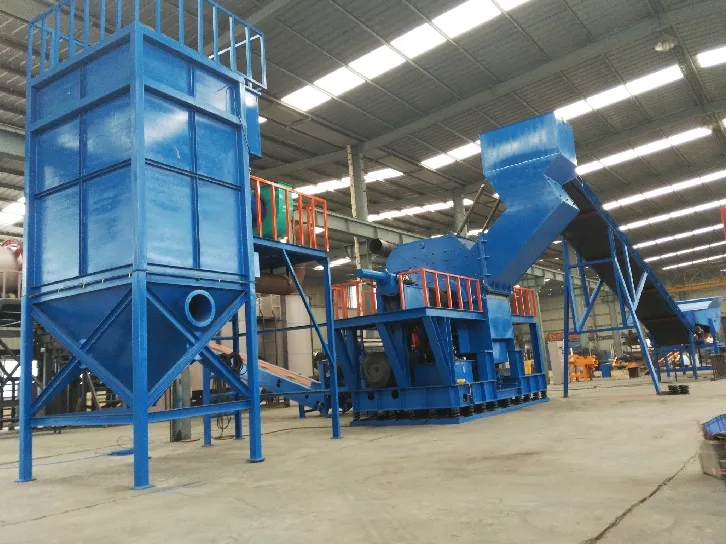

Dec . 10, 2024 14:28 Back to list
The Evolution and Role of Heavy Duty Metal Shredders in Recycling
In an age where sustainable practices are crucial for environmental preservation, the recycling industry has seen significant advancements, particularly with the introduction of heavy-duty metal shredders. These powerful machines play a pivotal role in breaking down metal waste, making recycling more efficient and effective, while also contributing to the economy by ensuring that valuable resources are not wasted.
The Evolution and Role of Heavy Duty Metal Shredders in Recycling
The process begins when metal waste is fed into the shredder’s hopper. Once inside, the materials are subjected to immense pressure and rapidly spinning blades that fracture them into smaller pieces. This not only reduces the volume of waste but also prepares it for further processing. After shredding, the small metal pieces can be easily sorted, separated, and prepared for recycling. The result is a cleaner stream of recycled material that can be remanufactured into new products, thereby conserving natural resources and reducing the environmental impact associated with raw material extraction.

One of the significant benefits of heavy-duty metal shredders is their impact on the economy. The recycling industry employs millions of people worldwide, and the efficiency that shredders provide has made this sector more viable. With the ability to process large quantities of metal quickly, businesses can operate more effectively, reduce labor costs, and increase profitability. Moreover, as recycling becomes more common, it encourages the development of new technologies and methodologies, paving the way for innovation within the industry.
Environmental considerations are paramount in the discussion of heavy-duty metal shredders. By promoting recycling, these machines help divert metal waste from landfills, where it would contribute to soil and groundwater contamination. Metals, particularly heavy metals, can pose significant hazards when disposed of improperly. Shredders facilitate the responsible recycling of these materials, thus reducing the overall carbon footprint associated with metal production and consumption. The recycling process results in lower energy use, as reprocessing scrap metal generally requires significantly less energy than mining and refining new metal.
As technology progresses, heavy-duty metal shredders are becoming increasingly sophisticated. Modern models are equipped with advanced features such as automated sorting systems, remote monitoring capabilities, and intelligent control systems that optimize performance and minimize downtime. These innovations enhance the shredding process, making it safer and more efficient while allowing operators to manage machinery from a distance.
In conclusion, heavy-duty metal shredders are invaluable assets in the recycling industry, greatly contributing to resource conservation and financial sustainability. Through their ability to efficiently process and recycle metal waste, these machines not only support environmental goals but also foster economic growth. As we continue to face pressing environmental challenges, investing in such technologies will be essential in transitioning to a more sustainable future. The evolution of heavy-duty metal shredders illustrates a critical step towards smarter waste management and a greater commitment to recycling, demonstrating that the path to sustainability is achievable through innovation and technology.
Latest news
Troubleshooting Common Eddy Separator Problems
NewsJul.04,2025
The Role of Metal Recycling Plants in Circular Economy
NewsJul.04,2025
The Impact of Recycling Line Pickers on Waste Management Costs
NewsJul.04,2025
Safety Features Every Metal Shredder Should Have
NewsJul.04,2025
How Industrial Shredders Improve Waste Management Systems
NewsJul.04,2025
How Cable Granulators Contribute to Sustainable Recycling
NewsJul.04,2025